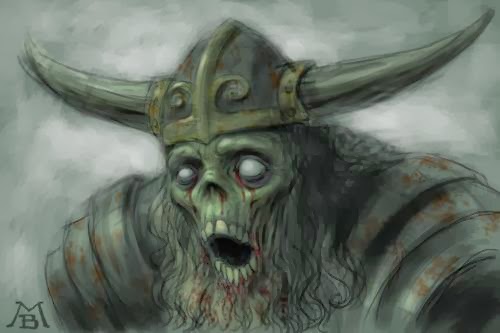ORIGIN
They are generally placed in European folklore, but they can also be found spread throughout the world, especially amongst the Native Indian tribes.
FIRST SIGHTED/RECORDED
They are dated as far back as the 10th century. Folklore can also be traced back to as far as Ancient Greece.
APPEARANCE
They generally appear as normal humans during the day. Sometimes there are tell-tale signs such as mono-brows, curved fingernails and low set ears. It is larger than an average wolf yet retains its eyes and voice.
GENDER
Generally male but there can be female versions too.
ALSO KNOWN AS
Lycanthrope (From Greek Lykos & Anthropos meaning "wolf man"), Wer & Wulf (Old English), Wair (Gothic), Wer (Old High German), Verr (Old Norse)
REPELLED BY
According to modern folklore, they are vulnerable against silver bullets. Other silver weapons are also thought to be effective. Religious artefacts' do not seem to have any power over them.
MAGICAL POWERS/SKILLS
Not only do they have the power to shape shift but they also have superhuman strength. They also have speed that is not natural to any humans.
HISTORY/ABOUT
They are a mythological/folkloric human that has the ability to shape shift into a wolf form. This is either because they have a curse placed on them, have been bitten by another werewolf or they can do it on purpose. There transformation often takes place when the moon is full, although in some instances, they can transform at will. Some people believed that if you cut their skin then you could find the fur underneath. When they transform back into human form they can appear as very weak. Recently buried corpses were in danger of being devoured by them. In Italy, France and Germany, it is said that if a person sleeps outside on a summer night during the full moon, then they will turn into one as the rays are shining on their face (on a Wednesday or Friday only). There is a thing called voluntary Werewolves, in which a pact is usually made with the Devil.
CAN BE FOUND
They are found more in the vast areas of Europe. They tend to live like normal humans so may have a normal home.
TALES
According to Ovid’s "Metamorphoses", in classic mythology, Lycaon, King of Arcadia, turned into a ravenous wolf in retribution for attempting to serve his own son to visiting Zeus in an attempt to disprove the Gods divinity.
ANY SIGHTINGS?
There have been many sightings of them over the years, even documented attacks but these usually get discredited as delusions or just a normal wolf attack.
SIMILAR CREATURES
Shape Shifters, Wulver, Skin Walker, Chupacabra



